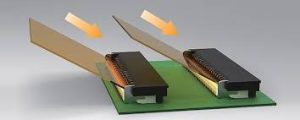Are fpc pcb suitable for high-temperature environments?
fpc pcb suitable for high-temperature environments
FPC stands for flexible printed circuit board and is a sheet of conductive material that replaces traditional wires in a wide range of movable or bent electronic devices, such as cell phones, automobiles and more. It is made of thin layers that are flexible enough to bend with the device and thick enough to maintain durability and functionality. FPCs are ideal for high-quality mobile devices that need to flex and bend with movement, as well as for products like laptop computers that require a large number of electrical connections.
The base material for an fpc pcb varies depending on the application, but usually involves either polyimide or polyester film with copper circuits laminated onto one or both sides. These materials offer flexibility and thermal stability, allowing the PCB to bend without losing functionality. The thickness of the conductive layer is also important to consider, as it will influence the overall strength of the circuit and the bending resistance.
There are several different surface finish options for an FPC, and selecting the correct one can make a significant difference in its longevity and performance. HASL (high-adhesion silver leaded) is a common surface finish for rigid PCBs, but is not recommended for use on FPCs because it can damage the copper traces during the fabrication process. Other surface finishes, such as FR4, are better suited for use with FPCs and offer higher reliability in dynamic environments.

Are fpc pcb suitable for high-temperature environments?
Choosing the best conductor material is also essential to an FPC’s performance. PET and PI substrates are limited to using silver ink for their conductors, while Polyimide and other FR-4 materials allow for the use of thinner copper foils. These copper foils can be either electrodeposited (ED) or rolled annealed (RA). ED copper offers superior conductivity and is ideal for high-speed applications, while RA copper provides excellent flexability and a low manufacturing cost.
Once the conductive patterns have been chemically etched into the insulating material, a tin-lead solder mask is applied to protect the copper and indicate where components are placed. This mask is bonded to the substrate with an adhesive, which can be selected from a variety of options. Polyimide adhesive is a popular choice for FPCs because it offers a good balance of mechanical properties and temperature ratings.
A final step in the fabrication of an FPC is adding the solder pads and connecting the component leads to them with a conductive epoxy paste or soldering. This process can be performed by hand or by an automated system. If a high-temperature environment is anticipated, a gold or silver soldering option can be used to provide better conductivity and prevent corrosion.
PCBs are the traditional form of circuit boards and are primarily made from a non-flexible substrate such as fiberglass or composite epoxy. They are more rigid and robust compared to FPCs and are extensively used in a wide range of electronic devices from consumer electronics to industrial machinery.
